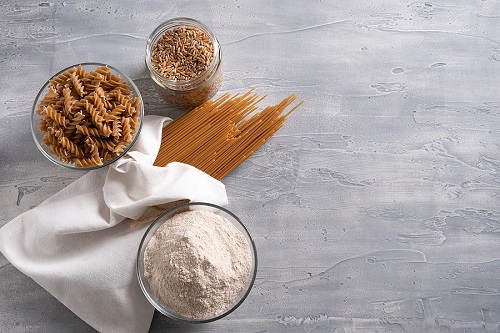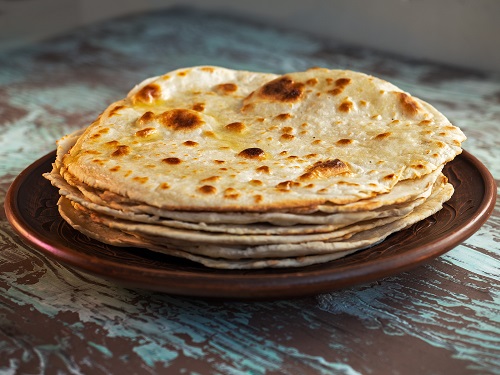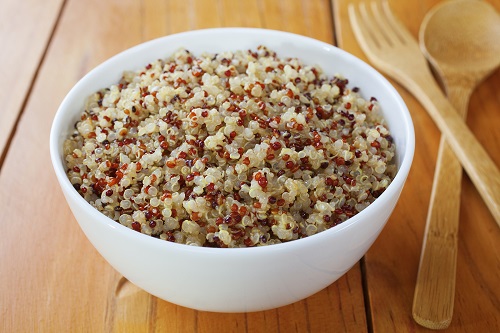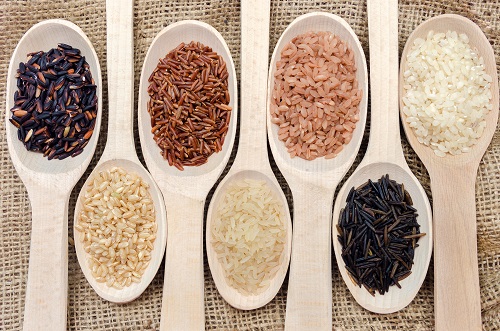Nutrition guidelines recommend “making half your grains whole.” Whole grains are rich in fiber and vitamins. However, there are many types of grains, and they can all be a delicious part of a healthy diet!
Each month this year, we are featuring a different food group or sub-group as part of our Food Talk Features… Series. Last month, we dove into the dairy food group. Dairy foods are a nutrition powerhouse because of all the essential nutrients they contain to support muscles and bones. Discover more about dairy in our blog here.
This month, we’re here to teach you about grains. We’ll take you through…
- The “what”- What foods count as grains?
- The “why”- Why eat these foods for our health?
- And the “how”- How can we eat more healthy grains?

What foods are grains and what are their benefits?
Foods that are made from cereal grains count towards grain foods. These foods include:
- Wheat and foods made from wheat, like bread, tortillas, breakfast cereal, and pasta.
- Rice and foods made with rice, like rice cakes.
- Oats and foods made with oats, like oatmeal.
- Cornmeal and foods made with cornmeal, like corn tortillas and grits.
- Grains like barley
- Popcorn
The grain group can be divided into two categories: whole grains and refined grains. Let’s break it down:
- Whole grains contain the entire grain kernel—the bran, germ, and endosperm.
- When the grain kernel is whole, it contains dietary fiber, iron, and many B vitamins. [1]
- Examples of whole grains include whole wheat flour, oatmeal, whole grain cornmeal, and brown rice.
- Refined grains have the outer layers of the grain kernel removed.
- This process is helpful for improving shelf-life and giving foods a lighter texture, but it removes some of the nutrients. [1]
- Examples include white flour, corn grits, and white rice.
- Choose refined grain choices that have been enriched with B vitamins, like folate, and iron. Look for the word ‘enriched’ in the grain name on the ingredients list.
B vitamins provide a wide range of functions. They are known mostly for helping the body produce energy. [2] These vitamins are also important for cell function, which keeps our bodies healthy. [3]
Whole grains are an easy source of fiber. Fiber helps to keep us full between meals by slowing down digestion. This improves blood sugar control, assists with weight management, and promotes a healthy digestive system. Fiber, including what is found in whole grains, is associated with a lower risk of heart disease. [4]
Other nutrients include magnesium and selenium, which are found in whole grains. Magnesium supports bones and muscles, while selenium is important for immune support. [1] Choosing whole grains at least half the time will help you take in these beneficial nutrients!

How much do I need?
Grain servings are measured in ounce equivalents. An ounce equivalent is how grains are measured based on their weight. When available, choose whole grain versions. Some examples of 1-ounce equivalent grains include:
- 1 slice of sandwich bread
- 1 cup of breakfast cereal or instant oatmeal
- ½ cup of cooked rice, pasta, quinoa (keen-wah), oatmeal, or other grains
- 1 mini bagel, small piece of cornbread, or small biscuit
- ½ English muffin or 1 small muffin
- 3 cups popped popcorn
- 1 small chapati, roti, or tortilla [1]
The amount we need each day depends on many factors. In general, use the Daily Grain Table guidance from MyPlate, and remember to make half your grain servings whole grains! Daily recommendations are:
- Toddlers: 1 ¾ – 3 oz-equivalents
- Children 2-8 years old: 3-6 oz-equivalents
- Girls 9-18 years old: 5-8 oz-equivalents
- Boys 9-18 years old: 5-10 oz-equivalents
- Women 19+ years old: 5-8 oz-equivalents
- Men 19+ years old: 6-10 oz-equivalents

Get your Grains in!
As you may have noticed, there is plenty of room in our diets for grains. For most adults, a serving or two can be included in most meals and some snacks. This is great news for us! Grains provide us with the energy we need to get through the day.
Be mindful of the amount you serve yourself. We often eat 2–3-ounce equivalents of grains without realizing it! For example, a sandwich with 2 pieces of bread includes 2-ounce equivalents of grains. A pasta dish might include way more than ½ cup, which is 1-ounce equivalent. This is fine, but it is helpful to know that a serving size is not the same as an ounce equivalent.
Focus on choosing whole grains when you have an option. Look for ingredients like “whole wheat flour” or “whole grain cornmeal” on pre-made items and opt for brown rice or whole wheat bread. Find whole grain foods you enjoy! We recommend that you keep your pantry stocked with whole grains. For more information on this, check out our Classic Pantry Staples blog.

Looking for some grain inspiration? Check out these healthy recipes that use whole or refined grains:
- Find some yummy whole grain oatmeal in this Oatmeal Recipes for Breakfast blog post.
- Pasta fan? Try out this Slow-Cooker Vegetarian Lasagna or Warm Chicken with Pasta and Vegetables, both made with whole grain noodles.
- If rice is more your thing, whip up some Stuffed Peppers, Slow-Cooker Rice and Peas, or our delicious Black Bean & Quinoa Bowl (cooks like rice!).
- Turn on the oven for our Chicken Pot Pie with Drop Biscuit Topping, Whole Wheat Berry Buckle, and Collard Green Cornbread Muffins!
- Tortillas and flatbreads are the stars of Fiesta Quesadillas, Baked Tortilla Chips, Homemade Veggie Pizza, and the Yeast-Free Skillet Flatbread (use it to make our Rainbow Pizza, too).
Which whole grains will your family choose?
Written by Melanie Ng, Ph.D. Candidate | Edited by Leslie Davis, MS, RD, LD, CDCES and the Nutrition Education Team